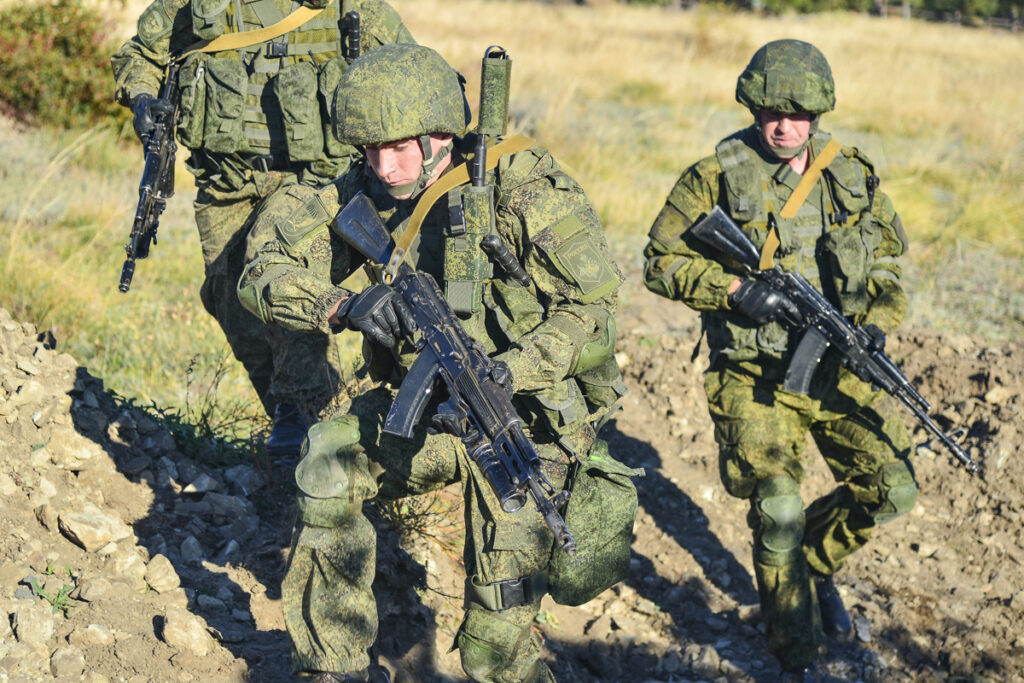ISW: Russian forces deploy up to 600 troops weekly for infantry assaults in one direction
Putin acknowledged ongoing economic challenges during a government meeting but claimed Russia could sustain the longer war.


According to the Institute for the Study of War’s (ISW) 28 October report, Russian forces achieved marginal advances in several key areas of eastern Ukraine. Also, NATO Secretary General Mark Rutte revealed that South Korean intelligence officials have shared evidence of North Korean military units operating in Russia’s Kursk Oblast.
Russians are able to constantly commit large infantry groups to continue assaults, with North Korean troops now expected to contribute to these operations.
In the Kupiansk direction (north-eastern part of the front), Russian forces made confirmed advances southeast of the city, with geolocated footage showing progress within Kolisnykivka and southwest of Kruhliakivka. The Russian military continued offensive operations along the entire Kupiansk-Svatove-Kreminna line, conducting multiple assaults in the area.

Southeast of Pokrovsk in Ukraine’s Donetsk Oblast, Russian forces secured notable gains, with confirmed advances north of Selydove, within central Vyshneve, and near Novodmytrivka. The Russian Ministry of Defense announced the capture of Tsukuryne southeast of Selydove, crediting the 114th Motorized Rifle Brigade with the operation.
A Ukrainian company commander reported that Russian forces maintain significant pressure in the Selydove area, demonstrating the capability to deploy up to 600 troops weekly for infantry assaults. Ukrainian sources indicated that Russian forces have redirected personnel from northern areas to support operations near Selydove, while increasingly relying on precise strikes using first-person view (FPV) drones attached to reconnaissance drones rather than traditional artillery strikes.

In the Vuhledar direction, Russian forces achieved several advances, confirmed by geolocated footage showing progress southwest of Yelyzavetivka and near Katerynivka, where Ukrainian forces repelled a reinforced company-sized mechanized assault. Additional advances were documented northeast of Shakhtarske.
Meanwhile, Ukrainian forces conducted a series of drone strikes against Russian distilleries on the night of 27-28 October, reportedly targeting facilities that produce rocket fuel and aviation-related materials. The Ukrainian Center for Countering Disinformation noted that these strikes aim to reduce Russian aviation capabilities, with confirmed hits on facilities in Voronezh Oblast.
Russian President Vladimir Putin acknowledged ongoing economic challenges during a government meeting, noting labor shortages while attempting to highlight low unemployment rates as a positive indicator. Despite claiming industrial growth, Putin admitted to “difficulties and imbalances” in the Russian economy, including the impact of international sanctions and technological shortages.
Ukraine’s Military Intelligence (GUR) has reported observing North Korean personnel being transported along the E38 Kursk-Voronezh highway in civilian vehicles, though Ukrainian forces have not yet engaged these units in combat.
Other key takeaways from the report:
- NATO Secretary General Mark Rutte announced that South Korean intelligence officials shared evidence with NATO officials that North Korean units are operating in Kursk Oblast.
- Ukrainian forces conducted another series of drone strikes against Russian distilleries on the night of 27 to 28 October to reduce Russian aviation capabilities.
- Russian President Vladimir Putin briefly acknowledged Russia’s labor shortages but claimed that the Russian economy is able to sustain a long war against Ukraine.
- Georgian civil society, opposition, and international election observers continue to reject the results of the 2024 Georgian parliament elections amid a large-scale demonstration in Tbilisi
Related:
- “We’ll help you with anything.” Russia’s gamble with North Korea sends message to China, warns former US diplomat
- Kim Jong-un sends his elite forces to Ukraine -“too valuable to be cannon fodder,” says former US diplomat
- South Korean intelligence confirms North Korean troops moved to Russian front lines
- South Korea to send delegation to Ukraine this week over North Korean troop presence
- Multiple explosions rock Russian-occupied Luhansk, ammunition depot reportedly hit (video)
You could close this page. Or you could join our community and help us produce more materials like this.
We keep our reporting open and accessible to everyone because we believe in the power of free information. This is why our small, cost-effective team depends on the support of readers like you to bring deliver timely news, quality analysis, and on-the-ground reports about Russia's war against Ukraine and Ukraine's struggle to build a democratic society.
A little bit goes a long way: for as little as the cost of one cup of coffee a month, you can help build bridges between Ukraine and the rest of the world, plus become a co-creator and vote for topics we should cover next. Become a patron or see other ways to support.



